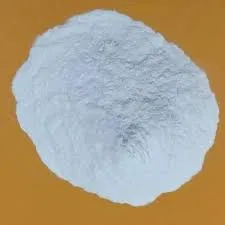
Nov . 08, 2024 12:14 Back to list
HPMC Production and Manufacturing Insights for Hydroxypropyl Methyl Cellulose Industry
Exploring the HPMC (Hydroxypropyl Methyl Cellulose) Factory A Vital Component in Modern Industries
Hydroxypropyl Methyl Cellulose (HPMC) is a vital ingredient widely used across various industries, including pharmaceuticals, food, construction, and personal care. As a derivative of cellulose, HPMC boasts numerous advantageous properties such as water solubility, viscosity, and chemical stability. This article delves into the role of HPMC factories, examining their significance, production processes, applications, and the future of this crucial industry.
Understanding HPMC
HPMC is a semi-synthetic polymer derived from cellulose, which is a natural polymer found in the cell walls of plants. Through a series of chemical reactions involving propylene oxide and methyl chloride, HPMC is produced, resulting in a versatile material that can be tailored to meet specific needs. This customization makes HPMC particularly valuable in various formulations, allowing industries to achieve desired properties for their products.
The Production Process
The production of HPMC involves several intricate steps. First, cellulose, typically sourced from wood pulp, undergoes alkalization to enhance its reactivity. After this step, propylene oxide and methyl chloride are introduced to the alkaline cellulose, resulting in etherification. The reaction conditions—such as temperature, pH, and duration—are meticulously controlled to achieve the desired degree of substitution, which dictates the properties of the final product.
Once the etherification process is complete, the resultant product is isolated and purified. This process ensures that any impurities are removed, leading to a high-quality HPMC that meets industry standards. The final product can be processed into different forms, including powder, granules, or solutions, depending on its intended application.
Applications of HPMC
The diverse applications of HPMC stem from its unique properties. In the pharmaceutical industry, HPMC serves as a binding agent in tablet formulations, ensuring consistent tablet quality and controlled release of active ingredients. Its use as a coating agent also enhances the stability and palatability of medications.
hpmc-hydroxypropyl methyl cellulose factory

In the food industry, HPMC acts as a thickening agent, stabilizer, and emulsifier. It provides texture and improves the mouthfeel of various food products, from sauces to dairy products. Additionally, HPMC is utilized in gluten-free baking as a replacement for gluten, providing elasticity and structure to baked goods.
Construction industries benefit significantly from HPMC as well. It is commonly added to mortars, plasters, and tile adhesives to improve workability, water retention, and adhesion. Its ability to enhance the performance of these materials makes HPMC an essential additive in modern construction practices.
Moreover, HPMC finds application in the personal care sector, where it is utilized in cosmetics and personal hygiene products. It acts as a thickener and stabilizer in lotions, creams, and gels, contributing to the overall aesthetic and usability of these products.
The HPMC Factory A Nexus of Innovation
HPMC factories are hubs of innovation, where technology and expertise converge to produce this invaluable material. These facilities are equipped with advanced machinery and adhere to stringent quality control measures to ensure that the HPMC produced meets the highest standards.
In recent years, there has been a growing emphasis on sustainability within HPMC factories. Many manufacturers are exploring eco-friendly production methods, such as sourcing raw materials from sustainable forestry practices and reducing waste through recycling initiatives. By prioritizing sustainability, HPMC factories not only contribute to environmental protection but also enhance the overall reputation of the products they produce.
Future Prospects
The future of HPMC production looks promising, driven by the increasing demand for sustainable and eco-friendly products across industries. As more companies strive to implement greener practices, HPMC’s biodegradable nature offers an appealing alternative to synthetic materials. Additionally, advancements in technology and production processes will likely lead to innovations in HPMC formulations, expanding its applications further.
In conclusion, HPMC factories play a crucial role in producing a versatile and essential material that supports multiple industries. With its unique properties and wide-ranging applications, HPMC is poised to remain a vital component in modern products. As the industry evolves, HPMC factories will continue to innovate and adapt, ensuring that this remarkable compound meets the demands of a changing world while contributing to sustainable practices.
-
Versatile Hpmc Uses in Different Industries
NewsJun.19,2025
-
Redispersible Powder's Role in Enhancing Durability of Construction Products
NewsJun.19,2025
-
Hydroxyethyl Cellulose Applications Driving Green Industrial Processes
NewsJun.19,2025
-
Exploring Different Redispersible Polymer Powder
NewsJun.19,2025
-
Choosing the Right Mortar Bonding Agent
NewsJun.19,2025
-
Applications and Significance of China Hpmc in Modern Industries
NewsJun.19,2025







